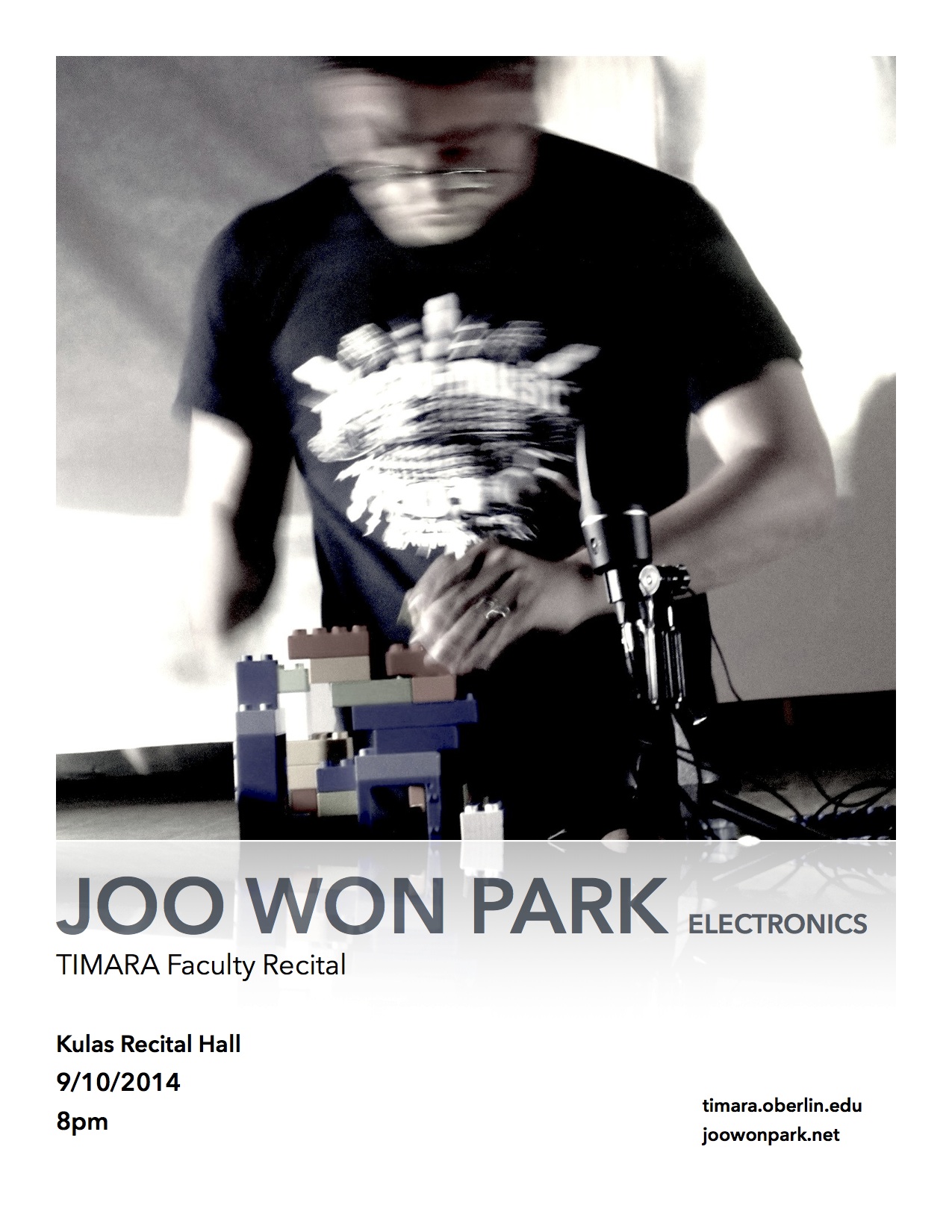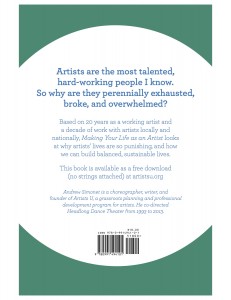100 Strange Sounds is my recent electronic music project. It consists of 100 videos of live original music on YouTube. I worked on the project for 1.5 years, producing 5 hours of music using computer, found objects, and consumer electronics. I worked on the Strange Sounds harder than any other projected I have done, and it gave me a chance to grow artistically. It also produced the income from advertisement:

I am satisfied with the number of views, but the total estimated earnings of $15.38 is a laughable number. I made more money at working 3 hours in my first job that required sitting down in a room for few hours. Here’s what $15.38 income taught me about video streaming monetization.
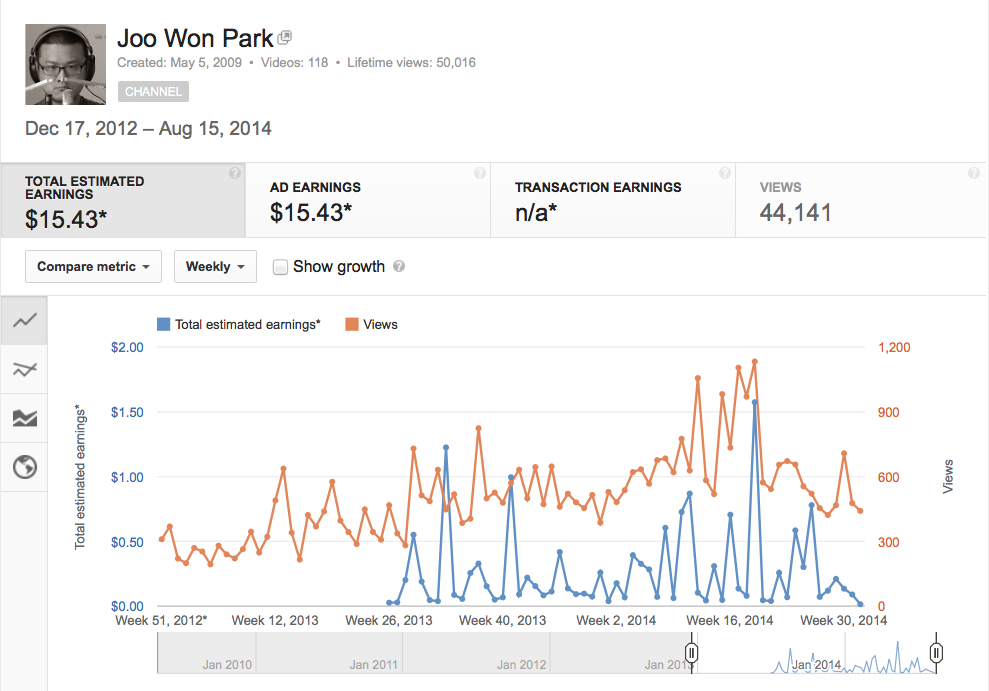
After becoming a YouTube Partner, I started to allow YouTube to monetize my video when I started 100 Strange Sounds project. To monetize means that I allow YouTube to show an advertisement in my uploads, either as a fullscreen or as a little box in the video. Whenever the viewer sees or clicks an ad on my video, I have a possible earning from the ad. My first 100 Strange Sounds video was uploaded in mid December of 2012, but I did not make earnings from the ad until June of 2013 (see above chart provided by YouTube Analytics).
This is because allowing ads on the video does not automatically pay the channel owner. It seems that Youtube/Google needed to verify that I am a real person and have been uploading legal contents. The verification process took longer time than I expected. I received a snail mail (not email) from Google to finalize the process after 6 months of monetizing my first video.
I do not know where my ad earning of December 2012 to May 2013 went, but I decided to forget it for now. For a better understanding of my earnings calculation, here is another version of the graph that shows the period when my videos started to earn ad money for me.
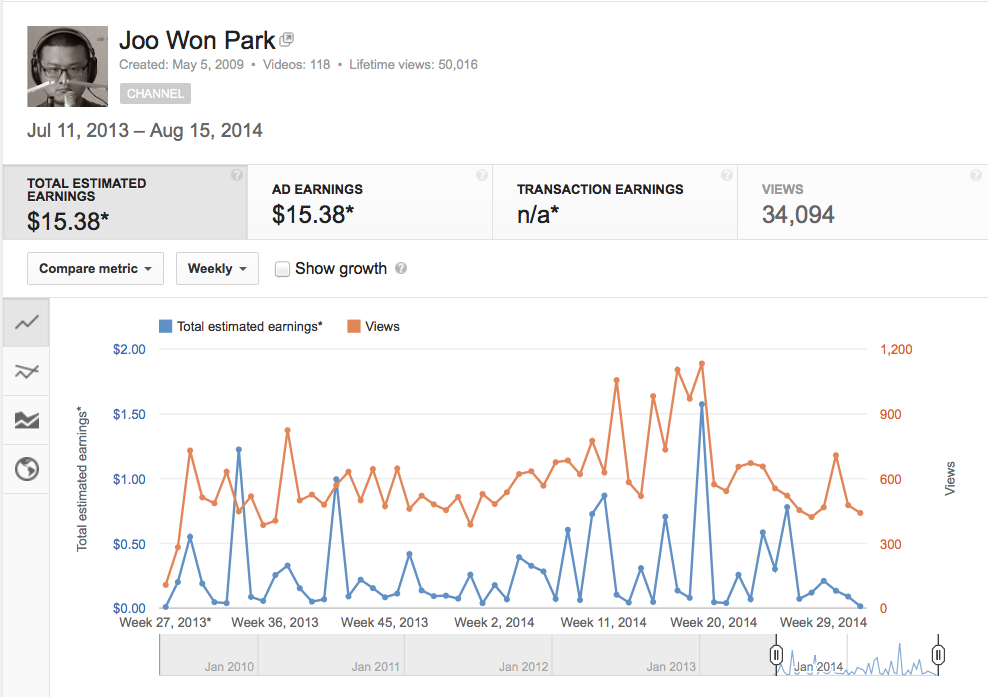
You may estimate that my earnings per view would be $15.38/34094=0.04¢, but it is not. There are some 100 Strange Sounds videos that I decided not to monetize. More specifically, I have not monetized videos that feature my family or friends for moral reasons. Also, many views are not counted towards monetization if YouTube decides that the viewers did not see the ad. If I see only the views that are counted for monetization, which is about 10% of the total view, I can calculate that the earnings per view is about $15.38/3533=0.4¢ or $0.004.
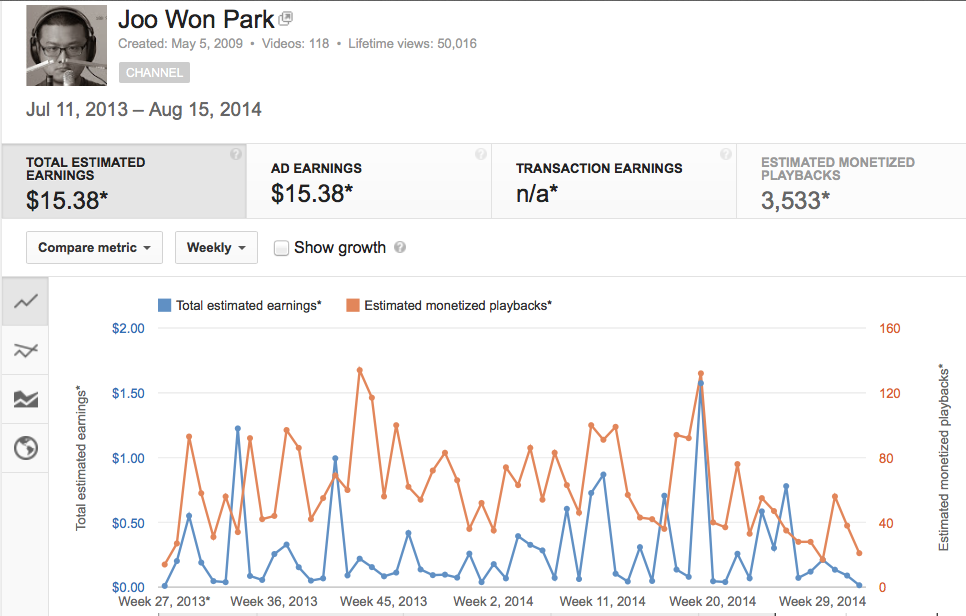
I also noticed that the videos with most earnings are not necessary the one with most playbacks. For example, Strange Sounds #42 has 170 monetized playbacks, but it creates less earning than Strange Sounds #47 with 121 monetized playbacks. My wild guess is that No 47 is one of the only videos that mentions a specific toy in a specific brand, but I have no evidences.
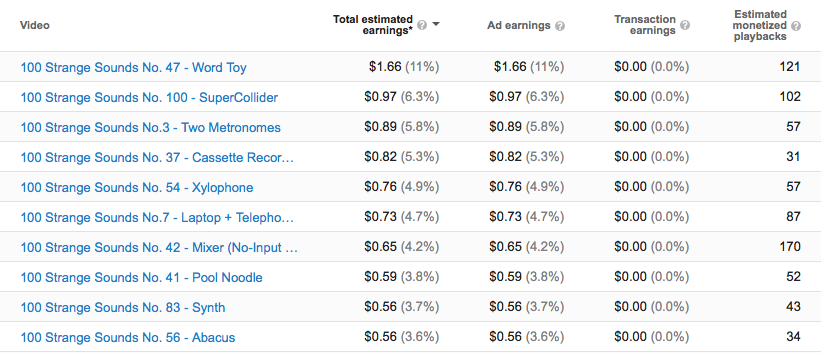
The last thing I learned about online streaming earning is that my Google Adsense account has payment threshold of $100. In other words, Google will not cut me a check if I earn less than $100. With 0.4¢ per view, I still need about 21500 more valid views to reach the threshold. If I continue to get about 3500 valid views per year , I’ll get my first payment in about 6 years.
To summarize, here are the financial lessons I learned from 100 Strange Sounds:
- Earnings per view is 0.4¢ only if the view is counted as monetized playback
- The Adsense account for the Youtube needs to be completely set to get earnings. It took me almost 6 months since the first monetized video to complete the process.
- I get paid in chunks of $100. With 0.4¢/view, 25000 monetized views are needed to see the payment in my bank account.
Despite all these financial discouragement, I don’t regret about uploading my works at YouTube. There are far worse services that will put an ad on your video without your permission and will not even consider giving you a share of the ad earnings (more on this story later). I will continue to monetize my 100 Strange Sounds videos for study purposes. I am planning to take some economics courses in the near future, and I am hoping that my personal hard-earned financial data could be useful in some research.
PS: If you liked reading this article or any works I do, please support by watching my video from my YouTube playlist

